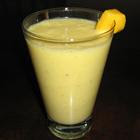The primary way your body cleanses itself of toxins is through your liver – it keeps poisons out of your bloodstream. Minimizing the poisons that have to be filtered out is essential for blood purification and liver damage prevention.
Fortunately, the outermost layer covering your entire body helps your liver eliminate toxins. The skin is an important detoxification ally and, thus, its ability to breathe can support the monster job of removing unwanted poisons.
The inflammatory state of a liver with chronic liver disease can be perceived as a bin full of smoldering coals, where everyday choices either keep those coals cool or spark a raging fire. Liver health advocates place a great deal of emphasis on avoiding food or drink that, when taken internally, contribute to liver inflammation. However, many people don’t realize that substances placed externally on the skin also impact the liver’s coals.
If the liver is inflamed or damaged, toxins remain to circulate throughout the body. When functioning optimally, the skin can actually help or hinder the liver’s detoxification process. The skin and liver detoxification relationship has two facets:
1. the skin can absorb poisonous chemicals, increasing the liver’s detoxification load
2. the skin can expel toxins, relieving the liver’s detoxification load
Unfortunately, people regularly slather their skin with a coating that prevents toxin elimination through the pores – a surefire way to contain poisons earmarked for elimination. With this exit blocked, more toxins remain in the body’s circulation to fan the flames of hepatic inflammation.
The skin is the elimination organ with the largest surface area. In addition to regulating temperature and body moisture content, the skin also functions as a backup or waste removal. If the liver is unable to process toxins, the skin provides an alternate escape route. However, the pores must be open and clear for this process to occur without event. Skin rashes, acne or other skin disorders are often indicators of a toxic build-up beneath the skin’s surface caused by clogged pores.
Common Clogging Culprit
Also known in the fossil fuel industry as crude oil, most of us come into contact with petroleum every day. Products containing petroleum include gasoline, Styrofoam, lubricating oils and many cosmetics. Claiming to moisturize our hair, skin and lips, mineral oil and petroleum are the primary ingredients in many beauty products. By covering the skin to form a protective barrier, petroleum and mineral oil effectively lock moisture against the skin.
Unfortunately, this supposedly beneficial barrier blocks more than is desired. Because it prevents the skin from breathing and expelling toxins, petroleum-based products can obstruct the skin from eliminating waste, thus increasing the liver’s detoxification load. Check the ingredients on your skin care products to see if any of these petroleum derivatives are present:
· Mineral Oil
· Petroleum or Petrolatum
· Propylene Glycol
· Isopropyl Alcohol
· Ceresin
· Toluene
· Benzene
· Paraffin
If you find these ingredients lurking in your home, consider replacing them with products that support your skin’s elimination function. For a person living with chronic liver disease, passing on petroleum may not only improve a dermatological condition, but it may also help your liver’s coals stay cool.
Dolkar Wellness
References:
Hampton, Aubrey. “Ten Synthetic Cosmetic Ingredients to Avoid.” Organic Consumers Association. June 28, 2008
http://en.allexperts.com/q/Herbs-Health-3224/Detox.htm, Herbs for Health, Dennis
Friday, September 12, 2008
LOVE YOUR LIVER
Posted by Dolkar at 2:03 PM
Subscribe to:
Post Comments (Atom)
















0 comments:
Post a Comment